PROCESS OVERVIEW
Process
In order to address the pain points, I thought to take the following steps.
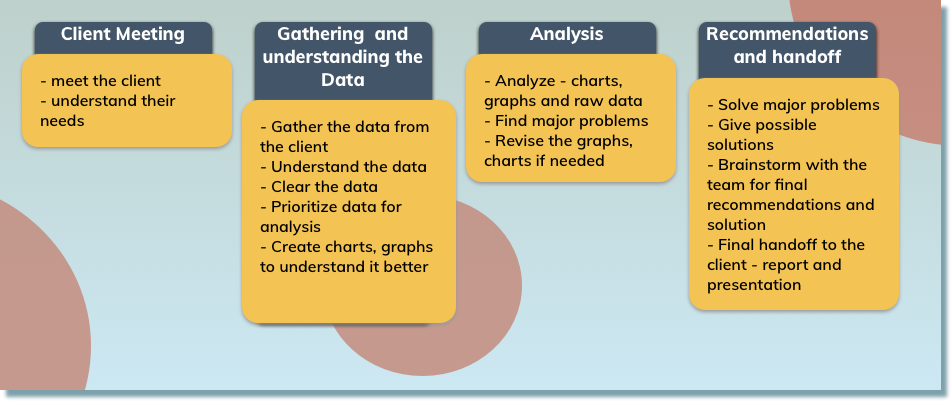
Evaluation of Moma's online course

How to increase the engagement of users for "Seeing through Photographs" course by MOMA on Coursera?
As a team of four members, we were assigned the task to increase the engagement of “seeing through photographs course” and address the following pain-points:
In order to address the pain points, I thought to take the following steps.

Museum of Modern Art (MoMA) online courses cover a range of topics from
fashion to photography to broaden public knowledge and spread
historical value of the arts. Seeing through photographs
had around 217,665 participants - highest among all the other
courses that Moma provides on Coursera.
 Seeing through photographs course aims to address the gap
between seeing and truly understanding photographs by
introducing a diversity of ideas, approaches,
and technologies that inform their making.
Seeing through photographs course aims to address the gap
between seeing and truly understanding photographs by
introducing a diversity of ideas, approaches,
and technologies that inform their making.
It was also found that only small percentage of people were able to complete the course out of the enrolled course and people where
dropping out from the course from the third module.
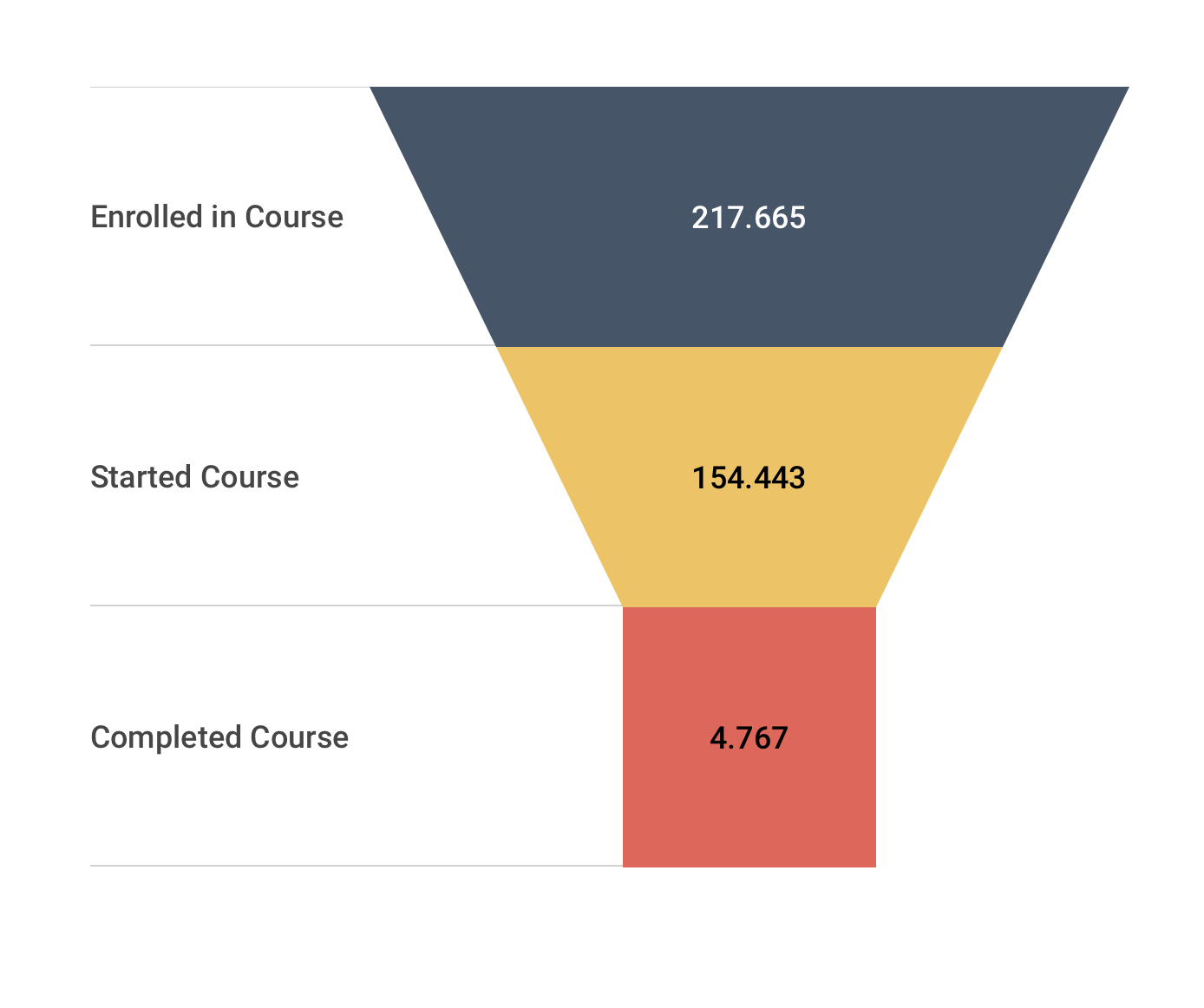
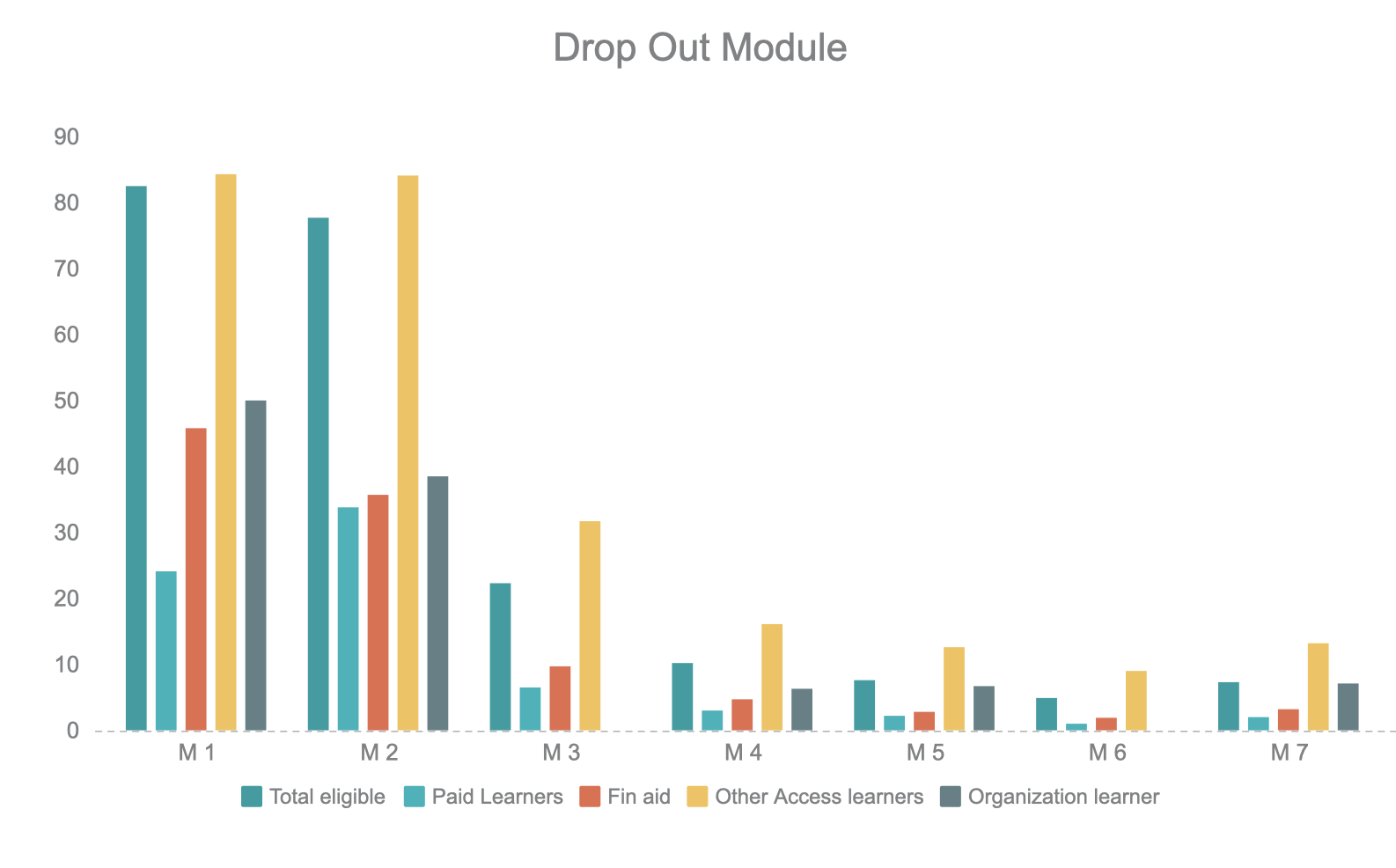
Below is the data that was retrieved from Coursera Analytics that was given us by the client.
Course participants demographic contained the results of the voluntary survey administered by Coursera and data inferred by Coursera, such as age, gender, education level, employment status. The geographic area is provided based on the browser’s IP and language is based on the user’s profile setting or browser’s language. They were visualized on the Coursera dashboard.
The course enrollment rate, course completion data , course drop-off points and engagement rates were visualized on the several graphs presenting checkpoints. Each Coursera course has 2 main checkpoints:

Each module has 5 checkpoints:

For the course participants demographics, course enrollment rate , course completion data , course drop-off points and course engagement rates the overall tendencies visible on the Coursera dashboard were analyzed. The critical points and Key Performance Indicators were identified and noted down:

The “Seeing Through Photographs” course elegantly combines exceptional reading material and in-depth interviews to create an overall captivating learning experience. This course received significant praise from its participants who were particularly impressed with the content curation and professional insights in each video and module.

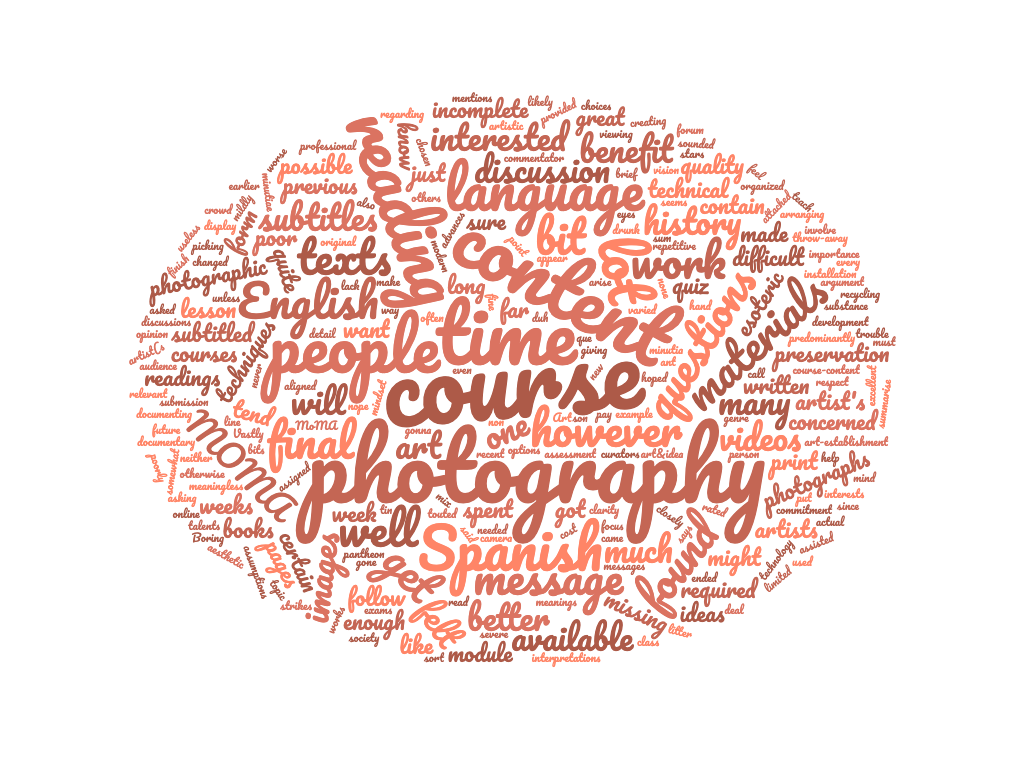
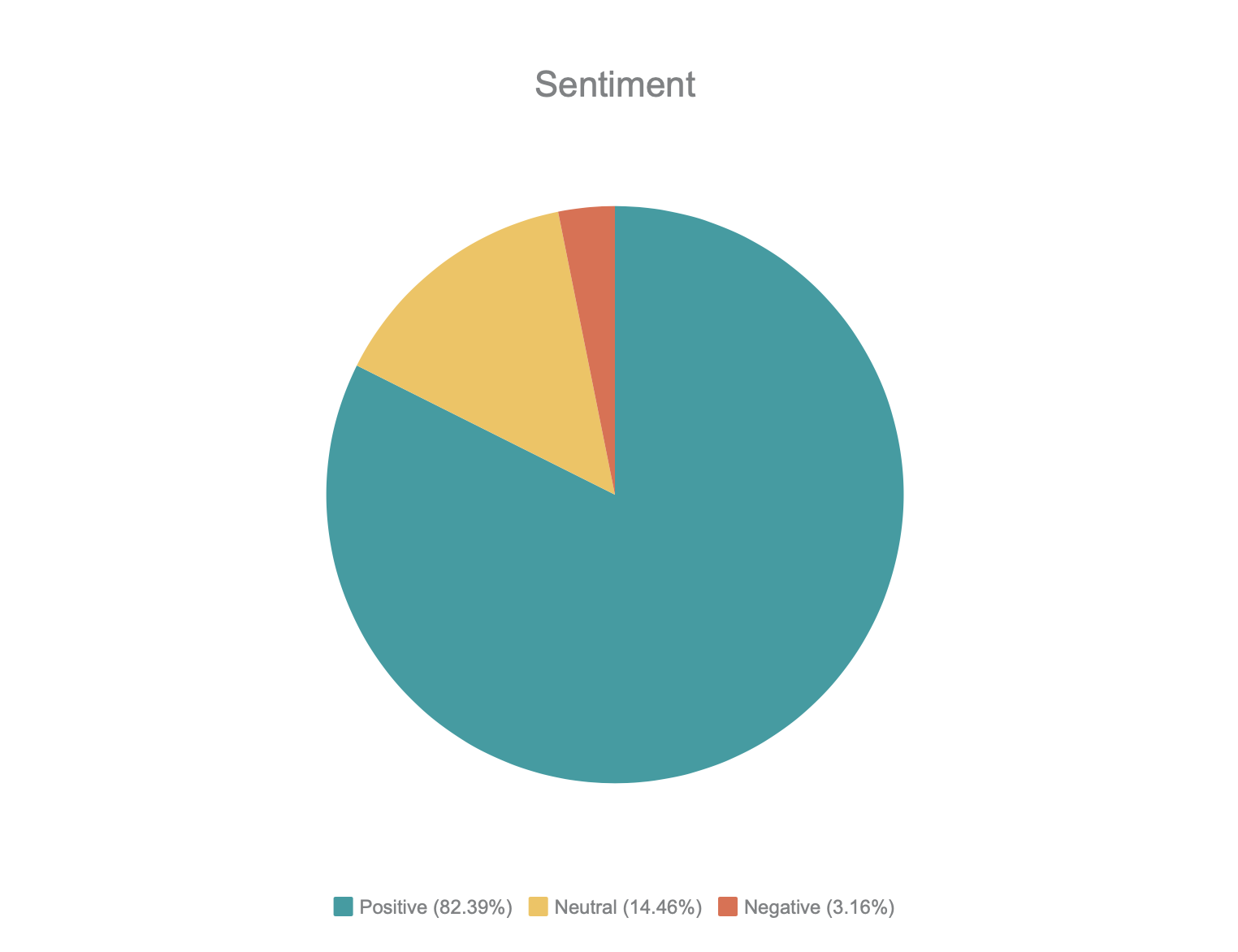
The “Seeing Through Photographs” course is offered in the English language. However, the user demographics reviewed reveals that course participants come from many different countries. For many of them, English is not their primary language but instead other languages, such as Spanish, French or Portuguese, are their primary.
“Es un curso hasta el momento muy bueno, organizado, pero para personas de habla hispana
puede resultar un poco complejo, al no contar con subtitulos”
Translation : “ It is a very good course, organized, but for Spanish speakers it can be a bit
complex, as it does not have subtitles.”

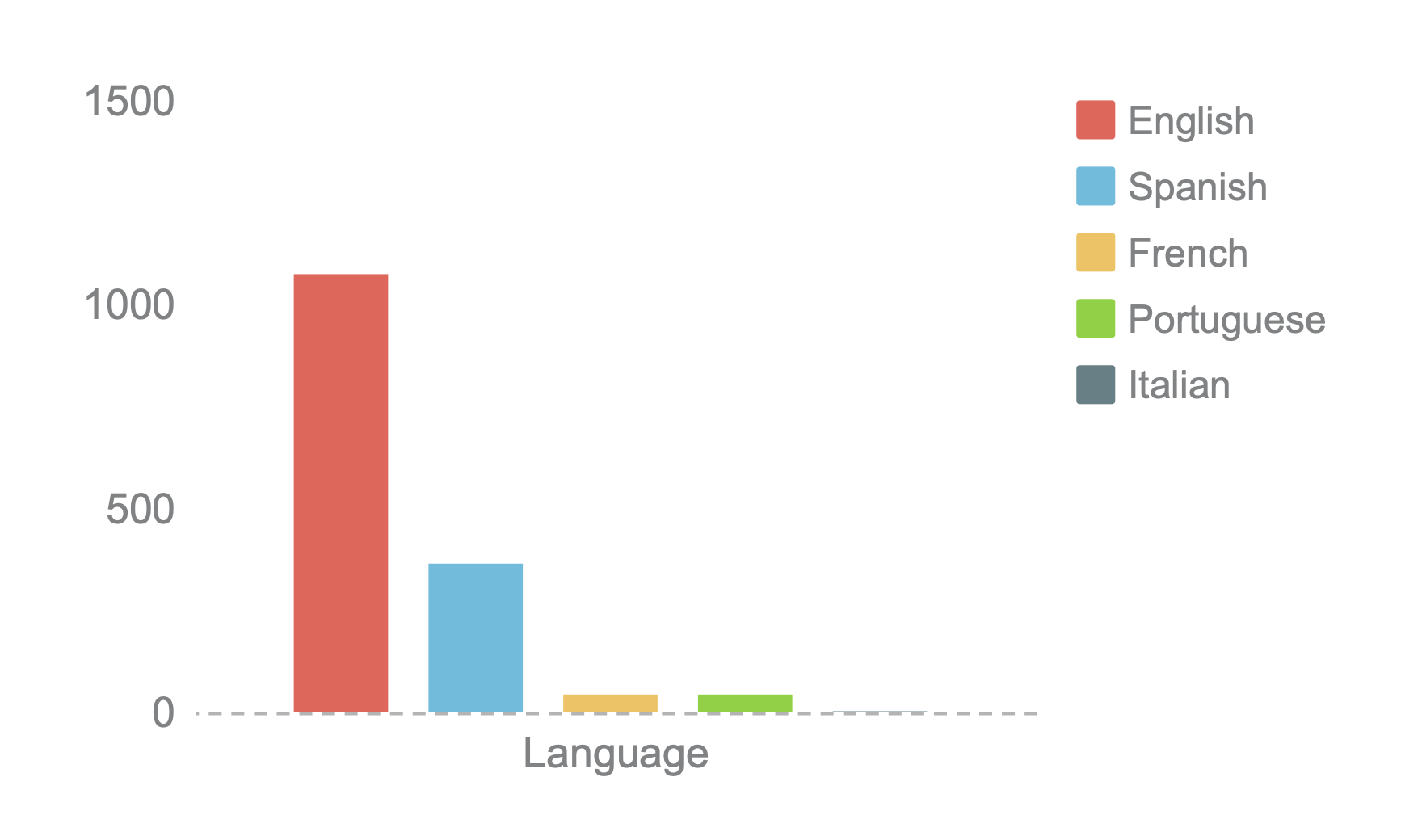
More than 40% of “Seeing Through Photographs” course learners come from Europe and approximately 18% from South America. Coursera has a subtitle feature available for the videos it hosts however, it is easily missed, and many participants were unaware of this option. It is recommended to provide a point of reference for participants in the introductory text or prior to the course commencing directing participants to the subtitle options available. This would allow learners to easily focus on the course and take greater advantage of the content.
Many learners while enrolling into the course, were not sure about the purpose of the course. Some of them were convinced, that it will introduce them into the history of photography
“ It give insight in the history of photography and is a stimulating start to do more research. ”
Others were expecting a course focusing on teaching how to take pictures and looked for the practical part of the course.
"I hoped that it was more professional, It was interesting but non technical”.
"I gained a broader understanding of the history of American photography and some of the
forces that has shaped it. Not a new skill".
Making the course objective more explicit upon start of the class would reduce some participant confusion. Additionally, editing the course title to touch on intended history, theory and critical thinking would provide clarity some participants felt were missing.
Learners were praising the quality of the materials used in the course, however, they noticed, that the transcript text used in the videos is too small and uncomfortable to read and follow. They expressed their dissatisfaction with the quality of the readings. They noticed, that the text used in the scans was too small and very difficult to read. Additionally, the readings are very academic, which might cause some difficulties for persons without an academic background
“The language used in the required literature is intensive for those of us who have not been back at college for a while.”
“Uploaded text was formatted in to be easier to read online. The pages were multiple horizontally and text was small”.
Rescanning the readings to improve their quality will increase their accessibility. The new scans should have the same orientation and, if possible, larger font
Learners would complete a quiz at the end of each module, which they would need to pass in order to move forward in the course. In reflection, they experienced difficulty in three different aspects involving the course quizzes.
“Quiz assignments could not be found in the required reading or slideshows.”
“Some of the questions were misleading, unanswerable based on the content or appeared unrelated.”
They found that quiz content was not aligned with lessons’ emphasis or course objectives and were unsure how to assess which details held more value than others. Similarly, participants felt the assignments were extensive and often difficult to get through which led to partial understanding of the overall scheduled content.
At times, Learners were unsure why their answers were incorrect after submission and desired a way to learn from their mistakes to ensure they wouldn’t be repeated on the next attempt.
“Excellent multiple choice for testing, but it is really hard to understand the mistakes made or know the correct answer after passing the module ”
Students desired shorter assignments to stay focused and a chance to better complete them.
They also requested quiz questions shift from static questions to include more critical thinking
prompts. For example: instead of what year did x occur? a shift to why was the notion of x
influential in photography today?
Clearly align testing content with learning objectives and module content so quizzes and
assignments feel less confusing or overwhelming. This can be accomplished by ensuring topics
emphasized in a module’s videos and readings are incorporated cohesively throughout its
corresponding quiz, assignment and final.
Lastly, providing an offline prompt, such as taking their own photos outdoors or researching
inspiring figures in this craft, encourages students to think critically about the content while
exploring photography technically or through their own personal research to promote
engagement.
Learners desired support when engaging with the course content especially when they were experiencing a language barrier. They wish they had more support from the forum for assignments and also felt unable to discuss their new knowledge with others. They wanted the opportunity to engage with other participants.
“It would have been great to be able to share our photographs - like the painting courses from MOMA and to have a virtual group for completing students.”
Some participants also asked for a second more advanced course offering to continue their educational journey in photography.
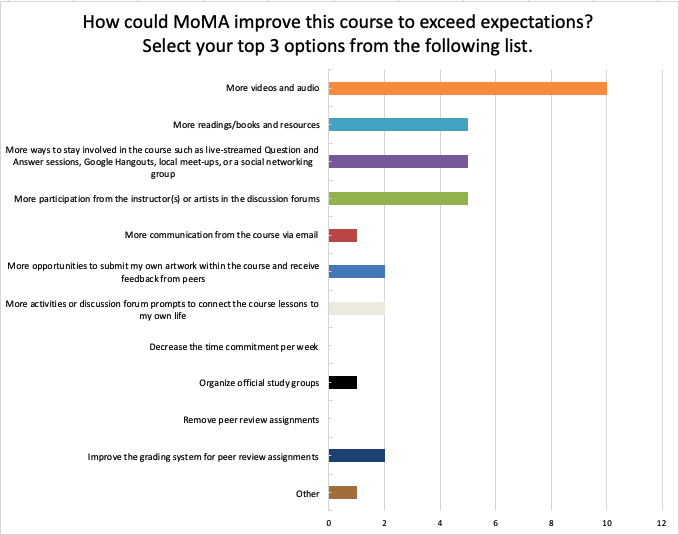
Users who enjoyed this course asked for an opportunity to further develop their skills through a new advanced photography course focusing on theory and critical thinking. It would provide incentive to continue and allow participants to stay engaged in the course online forum. Similarly, students had requested a chance to learn practical photography skills. MoMA is encouraged to look into creating a new practical course with photography, similar to the “In The Studio: Postwar Abstract Painting” course. The current “Seeing Through Photographs” course can be complemented with course offering describing the contemporary work and trends in photography.
Students felt unsupported at times when using the course forum. MoMA can consider opening forum moderator roles to course alumni and past students. Course alumni have first-hand knowledge of the course content and, with more involvement, can promptly respond to questions and concerns while removing language barriers. This has the potential to notably increase participation through establishing an accessible support system.
Students expressed a desire to connect and expand their photography skill set in relation to the course. Potential steps to facilitate this connection could be creating a course inspired hashtag, such as #momathroughphoto for example, or creating a course-dedicated Instagram page, Flickr or Facebook group where participants can freely share their photographic work and experimentations with the medium for course related feedback from around the world.

There were a lot things that I learnt during the process. Summarizing a few of them here: